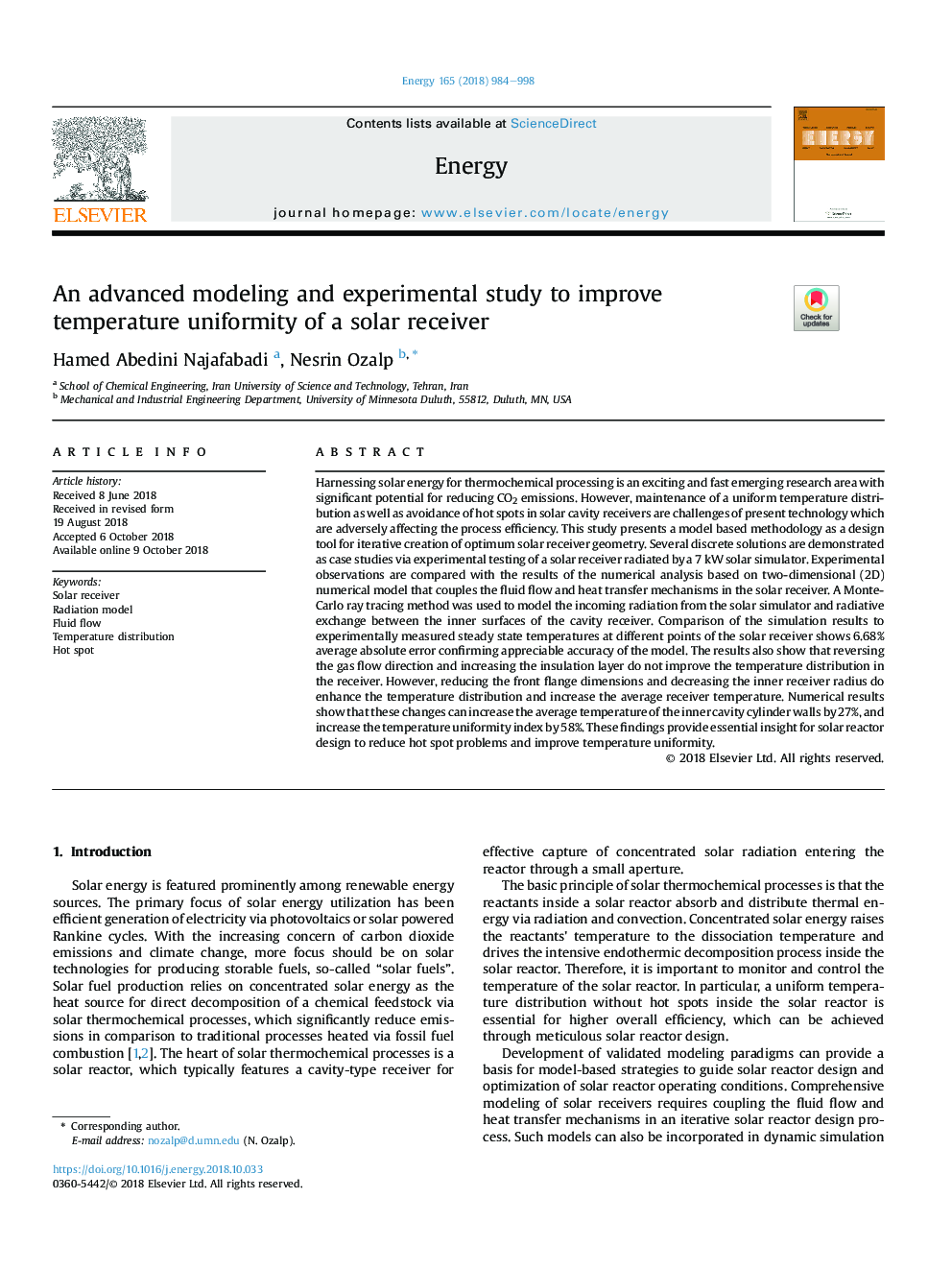| کد مقاله | کد نشریه | سال انتشار | مقاله انگلیسی | نسخه تمام متن |
|---|---|---|---|---|
| 11263098 | 1782157 | 2018 | 15 صفحه PDF | دانلود رایگان |
عنوان انگلیسی مقاله ISI
An advanced modeling and experimental study to improve temperature uniformity of a solar receiver
ترجمه فارسی عنوان
یک مدل پیشرفته و مطالعات تجربی برای بهبود یکنواختی یک گیرنده خورشیدی
دانلود مقاله + سفارش ترجمه
دانلود مقاله ISI انگلیسی
رایگان برای ایرانیان
کلمات کلیدی
گیرنده خورشیدی، مدل تابش، جریان سیالات، توزیع دما، نقطه داغ،
موضوعات مرتبط
مهندسی و علوم پایه
مهندسی انرژی
انرژی (عمومی)
چکیده انگلیسی
Harnessing solar energy for thermochemical processing is an exciting and fast emerging research area with significant potential for reducing CO2 emissions. However, maintenance of a uniform temperature distribution as well as avoidance of hot spots in solar cavity receivers are challenges of present technology which are adversely affecting the process efficiency. This study presents a model based methodology as a design tool for iterative creation of optimum solar receiver geometry. Several discrete solutions are demonstrated as case studies via experimental testing of a solar receiver radiated by a 7â¯kW solar simulator. Experimental observations are compared with the results of the numerical analysis based on two-dimensional (2D) numerical model that couples the fluid flow and heat transfer mechanisms in the solar receiver. A Monte-Carlo ray tracing method was used to model the incoming radiation from the solar simulator and radiative exchange between the inner surfaces of the cavity receiver. Comparison of the simulation results to experimentally measured steady state temperatures at different points of the solar receiver shows 6.68% average absolute error confirming appreciable accuracy of the model. The results also show that reversing the gas flow direction and increasing the insulation layer do not improve the temperature distribution in the receiver. However, reducing the front flange dimensions and decreasing the inner receiver radius do enhance the temperature distribution and increase the average receiver temperature. Numerical results show that these changes can increase the average temperature of the inner cavity cylinder walls by 27%, and increase the temperature uniformity index by 58%. These findings provide essential insight for solar reactor design to reduce hot spot problems and improve temperature uniformity.
ناشر
Database: Elsevier - ScienceDirect (ساینس دایرکت)
Journal: Energy - Volume 165, Part B, 15 December 2018, Pages 984-998
Journal: Energy - Volume 165, Part B, 15 December 2018, Pages 984-998
نویسندگان
Hamed Abedini Najafabadi, Nesrin Ozalp,
